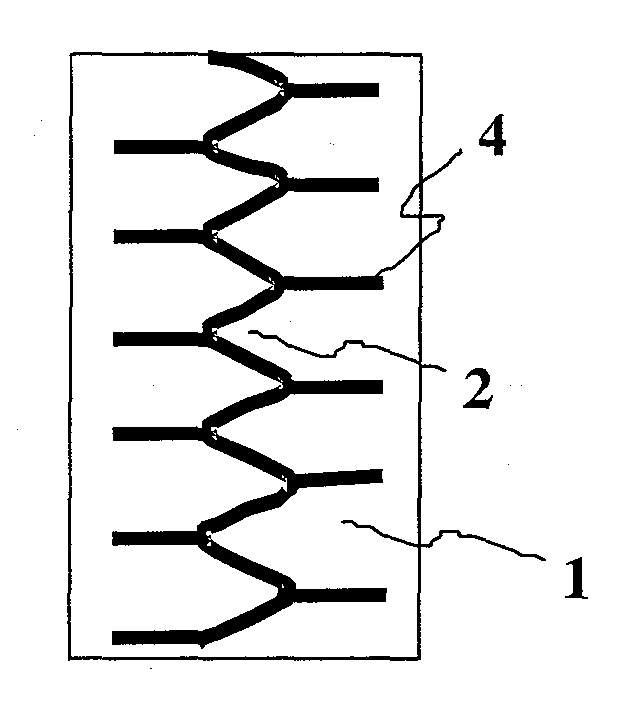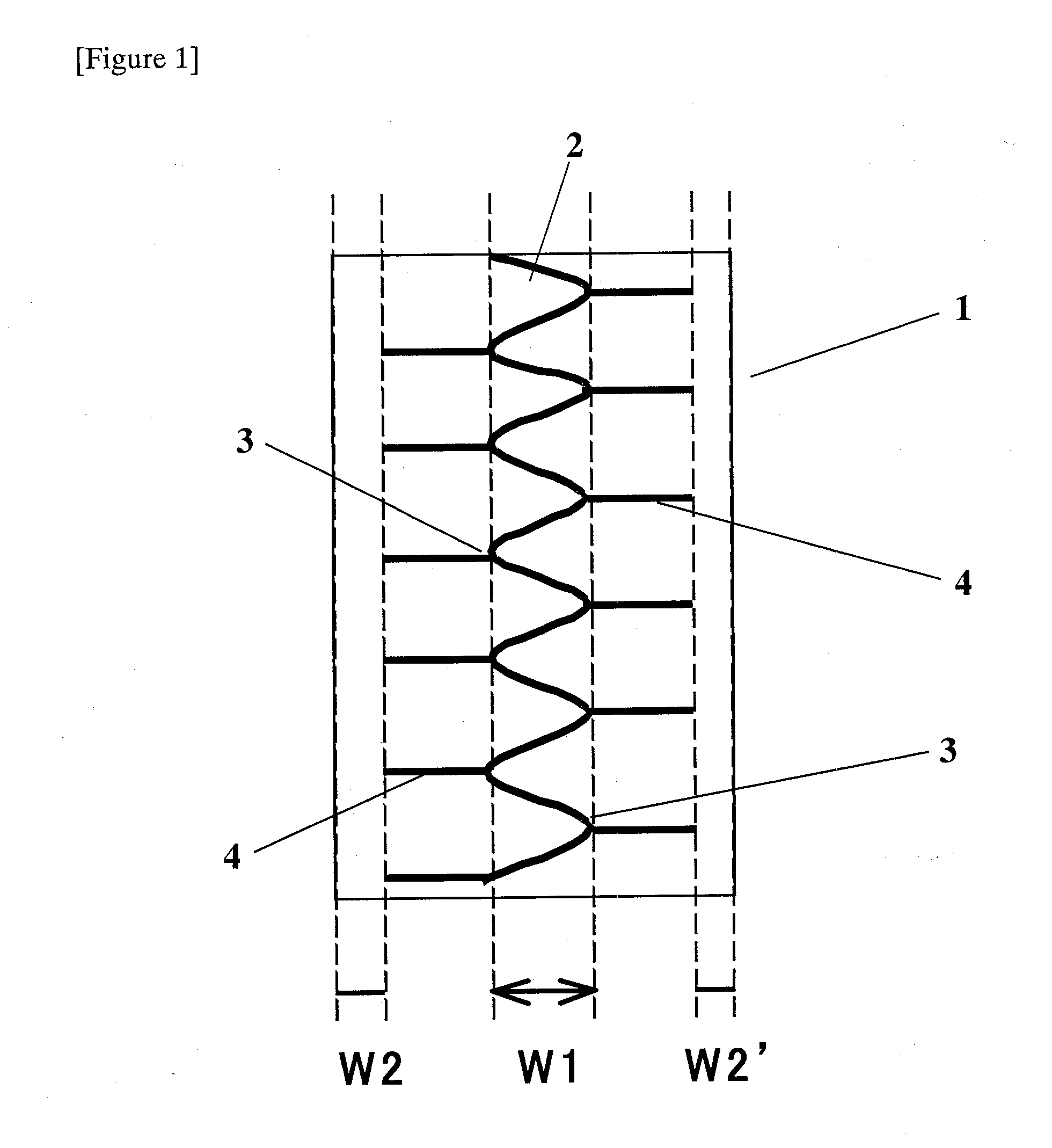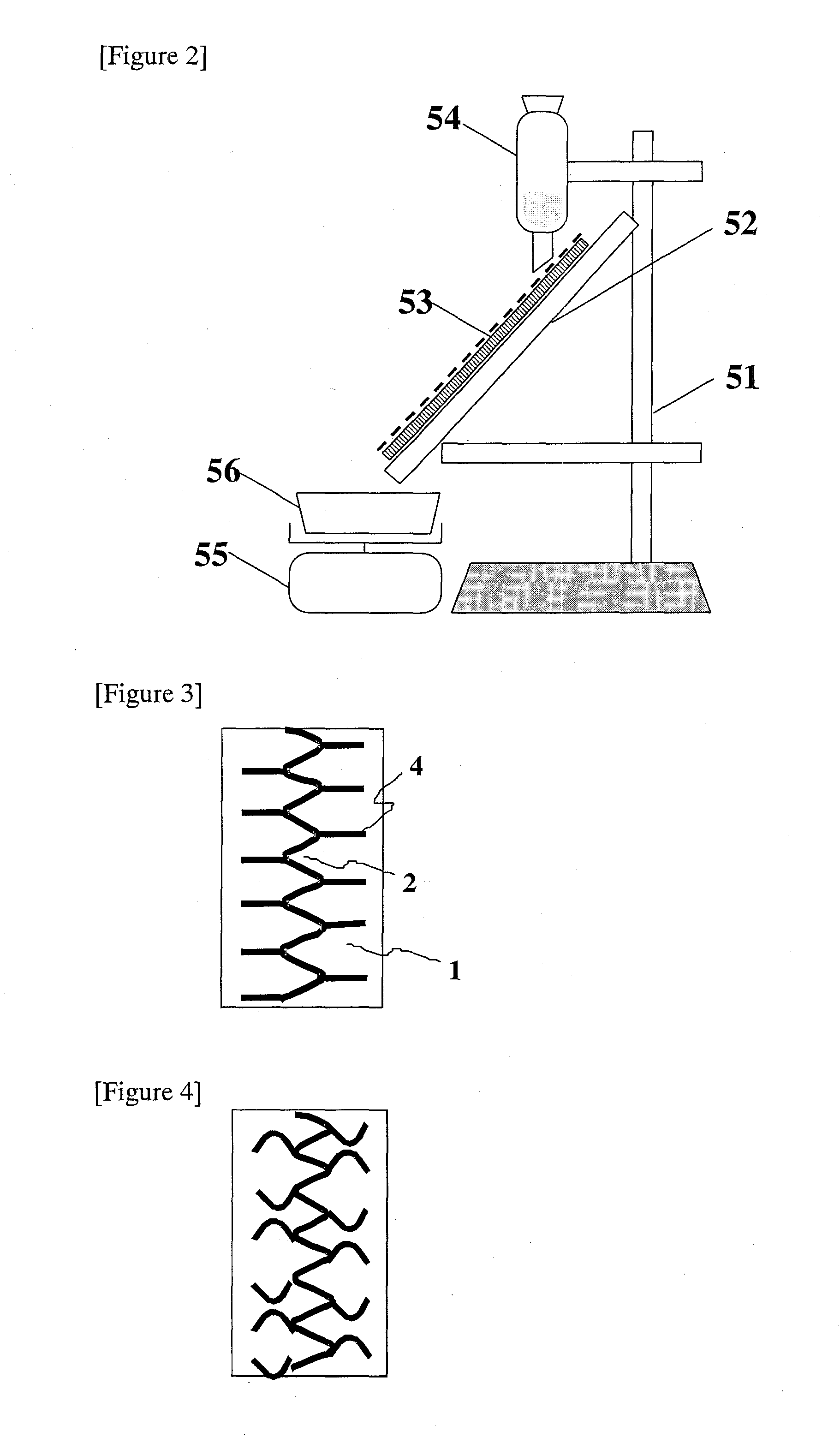Water-absorbent sheet
a water-absorbent and sheet technology, applied in the field of thin water-absorbent sheets, can solve the problems of slowed liquid permeation rate of absorbent materials, inability of water-absorbent resin internals to efficiently absorb liquid, and marked drop in liquid diffusibility, etc., to achieve excellent absorption properties and fast permeation rate of liquids
- Summary
- Abstract
- Description
- Claims
- Application Information
AI Technical Summary
Benefits of technology
Problems solved by technology
Method used
Image
Examples
example 1
[0085]A spun lace nonwoven fabric (basis weight: 50 g / m2, thickness: 400 μm, rayon content: 70%, polyethylene terephthalate content: 30%) having a width of 30 cm was spread over a hot melt applicator (manufactured by HALLYS Corporation, Marshall 150) of which heating temperature was set at 150° C., and thereafter a styrene-butadiene-styrene copolymer (softening point: 85° C.) was coated on the nonwoven fabric at a basis weight of 20 g / m2 as an adhesive.
[0086]Next, a roller spreader (manufactured by HASHIMA CO., LTD., SINTERACE M / C) was charged at its supplying inlet with a sodium polyacrylate crosslinked product (manufactured by Sumitomo Seika Co., Ltd., AQUAKEEP SA55SX-II, median particle size: 360 μm; water-absorption rate of saline solution: 42 seconds, water retention capacity of saline solution: 35 g / g) as a water-absorbent resin. On the other hand, the adhesive-coated nonwoven fabric mentioned above was spread over a conveyor at the bottom part of the spreader. Next, the sprea...
PUM
| Property | Measurement | Unit |
|---|---|---|
| thickness | aaaaa | aaaaa |
| thickness | aaaaa | aaaaa |
| thickness | aaaaa | aaaaa |
Abstract
Description
Claims
Application Information
 Login to View More
Login to View More - R&D
- Intellectual Property
- Life Sciences
- Materials
- Tech Scout
- Unparalleled Data Quality
- Higher Quality Content
- 60% Fewer Hallucinations
Browse by: Latest US Patents, China's latest patents, Technical Efficacy Thesaurus, Application Domain, Technology Topic, Popular Technical Reports.
© 2025 PatSnap. All rights reserved.Legal|Privacy policy|Modern Slavery Act Transparency Statement|Sitemap|About US| Contact US: help@patsnap.com



